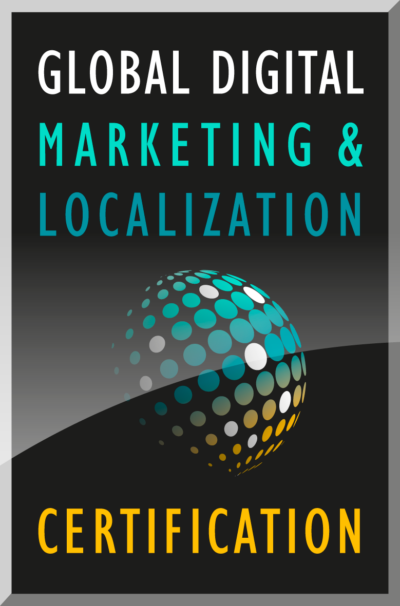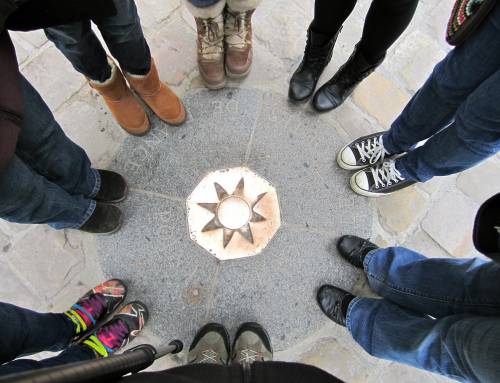Strategies for Expanding into the Next Big Growth Markets
This is a paper presented by Yingdi Qi, a recent graduate of the Global Branding and Marketing Certification (GBMC) program. This paper presents the work being produced by students of The Localization Institute’s Global Branding and Marketing program. The contents of this Paper are presented to create discussion in the global marketing industry on this topic; the contents of this paper are not to be considered an adopted standard of any kind. This does not represent the official position of Brand2Global Conference, The Localization Institute, or the author’s organization.
I. NBU and its strategic importance
Nearly one billion new users came online between 2013 and 2017; almost half of them come from 11 emerging economies in Asia, Africa and Latin America with growing populations, rapid GDP growth, increasing urbanization and expanding middle class (Sarin, Crawford, Klemp, & Sengupta, 2019). Significant number of users in those 11 emerging economies will likely also contribute to the upcoming next billion internet users by 2021 (Sarin et al., 2019).
Figure 1. Primed for growth – country population and online population of 11 emerging economies (Sarin et al., 2019)
The new generation of internet users in emerging economies is known as the Next Billion Users (NBU). The emergence of NBU has been transforming economy and culture, such as e-commerce, digital payments, sharing economy, online video ecosystem and beyond, as a result of their nontraditional needs and different user behavior in digital product/content in comparison with the first billion users (Sengupta, 2018).
Along with that trend, NBU has gradually become an intriguing topic for companies aspiring to expand beyond the saturated market and unlock new market potential.
However, expanding into NBU markets presents unique challenges due to various differences between traditional markets and NBU markets in areas such as cultural, institutional, economic, digital literacy, user needs & behavior, etc.
This paper will first examine the uniqueness and challenges of NBU markets when it comes to international expansion. It will then pick a few Google NBU products and initiatives as examples to discuss best practices companies should consider when expanding into NBU markets and unlocking market potential.
II. Uniqueness and challenges of NBU
Ghemawat’s CAGE distance framework succinctly outlines into 4 dimensions the ‘differences’ that a company should consider while devising cross-border strategies, including Cultural, Administrative, Geographic, and Economic (CAGE) distance (Ghemawat, 2018).
Cultural distance can be both systematic or idiosyncratic, such as different languages, social norms, values, dispositions, different ethnicities and religious beliefs, and a lack of connective ethnic or social networks (Ghemawat, 2018).
Administrative distance encompasses differences in laws, policies, and institutions that emerge from a political process and are either mandated or enforced by the government. For example, a lack of trade agreement, colonial ties and common currency, different legal system, weak legal institutions/corruption, and a lack of government checks and balances (Ghemawat, 2018).
Geographic distance includes physical distance between two countries and the presence or absence of common land border, differences in time zones and climates (Ghemawat, 2018).
Economic distance can be reflected in differences in consumer wealth and income, financial resources, infrastructure, supplier/distribution structure, organizational capabilities, economic size, low per capita income, low level of monetization, limited resources, inputs, infrastructure, complements, capabilities, etc. (Ghemawat, 2018).
Differences along the CAGE dimensions have a negative impact on cross-border interactions in general. However, those differences could also inspire waves of product & business innovation and therefore present unique opportunities for companies to unleash potential and create new value.
Aligning with the CAGE framework, expanding into NBU markets presents unique challenges. At micro level, influenced by cultural and economic differences, users in the NBU markets have different user behavior and expectations for digital device/content.
Unlike the first billion users, a vast majority of users in NBU markets possess mobile-first/only mindset, an instinct for natural interactions with devices, a demand for localized content (Sengupta, 2018), as well as much lower usage of credit/debit card (Sarin, 2019).
First, for most NBU users, a ‘computer’ is their smartphone – they never used a laptop or may never use one (Sengupta, 2018). 70% of internet users in NBU markets are relying primarily on mobile, compared with 35% of users in Germany, Japan and the US (Sarin, 2019). Instead of accessing the internet and info using a mouse and keyboard, they heavily or solely rely on phone or smartphone for queries, knowledge, job searching, or even government services such as paying for gas and electricity.

Figure 2. The next wave users are young and mobile-first (Sarin et al., 2019)
Aligning with their mobile-first inclination, the NBU users have an instinct for having natural, personal, simple, and innate interactions with devices so that they can hear, speak, see and understand. Growing up in an environment with limited or no exposure to computer or keyboard, the NBU users embrace the experience of using an app in a natural way, e.g. using their voices, as opposed to writing command lines, to get things done.
Additionally, living in a multilingual cultural with lower English literacy, the NBU users have a stronger demand of local or localized content. Over 70% of NBU users live in a country where more than 5 major languages are spoken, compared with 0% in Germany, Japan and US. The linguistic complexity in their living environment drives the demand for consuming local / localized content in languages they are familiar with.
Lastly, most NBU users are cash-dominated and have way less usage of credit / debit card or digital usage compared to developed market. Only 14% of NBU users used a credit / debit card in the past year, compared to 80% in developed markets. In African countries such as Nigeria, cash is used for more than 99% of payments; by contrast, digital channels account for more than 50% of transactions in many European countries (Manyika, Lund, Singer, White, & Berry, 2016).
As companies strategize expanding into NBU markets, taking that unique traits into account would be important for them to innovate product and service and unlock tremendous opportunities.
At macro level, in line with the unmet needs of rapidly urbanizing population and growing middle class, NBU markets possess powerful growth trends, however the growth trend is often accompanied by twists and turns that companies should watch out for and strategize accordingly.
Figure 3. Next-billion-user countries have conditions that are ripe for a surge (Sarin et al., 2019)
Trading barriers (Purnell & Mickle, 2018), lax of intellectual property (Nairobi, 2013) and weaker legal institutions/corruption (World Bank, 2018) are some of the challenging administrative factors of the NBU markets for international corporations to consider. In India, for instance, 20% tariff is imposed on products manufactured outside India and it requires single-brand retailers with more than 51% foreign-owned to buy at least 30% of Indian manufacturing materials from India vendors (Purnell & Mickle, 2018). Based on World Governance Indicators in 2017, the NBU markets ranked much lower on the percentile rank of government effectiveness, rule of law and control of corruption, with an average of 38, compared to Japan, Germany and US, with an average of 92 – score ranging 0 and 100, 0 being the lowest governance quality, 100 being the highest governance quality (World Bank, 2018).
From an economic perspective, though the NBU markets have immense growth potential, factors such as lower consumer wealth, insufficient financial resources, weaker infrastructure, smaller economic size, and lower per capita income are posing considerable challenges to companies aspiring to expand into the NBU markets (Ghemawat, 2018).
III. Best practices of expanding into the NBU markets
At product development level, companies need to create products and services that engage with NBU and fulfill their unmet needs. This is often based on 1) assiduous local research and observation; 2) partnering with local resources for product insight and validation; 3) building local partnership for business advancement; and 4) leveraging local content to further narrow down the gap.
For starters, companies need to observe NBU’s needs and behavior through the lens of NBU (instead of the lens of the first billion users), understand what unique challenges they are struggling with, and uncover business opportunities buried in them.
While travelling in Dhaka and Jakarta, two densely populated cities with rapid urbanization (Russell, 2019), Google Area 120 team noticed common challenges for local young job seekers – digitalization level of employers is often low; most job opportunities are not posted online but get passed on to them by word-of-mouth. However, the traffic congestion in the city often makes it challenging for them to drop hard copies of their CV/resume to the locations of employers. A lack of tracking mechanism makes it hard for them to stay apprised of the progress of their application.
Google Area 120 team sensed opportunities from observing the day-to-day challenges of locals. They then partnered with local organizations and built a mobile application called Kormo. With Kormo, employers could post their jobs in Kormo’s marketplace easily. As long as applicants have a smart phone, they could build their CV/resume in the app, be connected to the most relevant jobs based on their skills and career interests and submit info to employers right away. From submitting application, being selected for interview, to being finally hired, each step of their job application process is trackable in the Kormo. Applicants could also get access to tailored career-building suggestions / trainings in the app, which empowers their personal development and enables the economic mobility (Russell, 2019).
Image 1. Kormo app interface (Russell, 2019)
In addition to observing NBU behavior through NBU’s lens, companies should also partner with local resources for local knowledge building, create local customer feedback loops for real time insight and incorporate those insight in faster iterations to ensure their product would truly engage with NBU.
Neighbourly, a mobile app that allows people to ask local questions and find reliable answers from people nearby (Baki, 2018), serves as an example of how local insight enables local-driven product design and development.
In the early development phase of Neighbourly, UX research team spent hours walking the streets of Delhi, Mumbai and many smaller cities and communities to talk with people and learn about their lives and social dynamic among neighborhood. Through conversations with the locals, the team learned one pain point in line with the rapid urbanization is it’s getting harder for people to ask local questions and get word-of-mouth recommendations from their neighborhood – they are too busy to stop and chat on the street (Baki, 2018).
Listening to local people’s insight and pain points helped the product team to crystalize the problem they could solve. With that insight, the team delved into product design and development while working with local residents to conduct usability tests to validate / refine their prototypes. They sat down with participants in their living rooms and observed how participants used their product (Baki, 2018).
Through real-time feedback, the team were able to iterate faster and implement user’s suggestions to refine the product step by step. For example, they added a mic button to transcribe questions asked in the user’s local language, making the query process as natural and effortless as if they were asking a friend/neighbor. They also added a quick swipe to advance question cards so that the user experience is more fun and effortless.
Image 2. Collecting real-time feedback from users (Baki, 2018)
Staying connected to NBU’s pulse and leveraging real-time local insight for iterative improvement helps product teams to build product that well resonates with the prospective users.
Apart from partnering with potential local users for product insight, companies aspiring to enter NBU markets are also advised to collaborate with local businesses for technical breakthrough and business advancement.
Voice assistants have been gaining rising popularity in Latin America. A Global Web Index survey in Q2’2018 indicated that 43% internet users in Latin America have used a voice search tool or a voice-controlled smart assistant or speaker in the previous month (Ceurvels, 2019). Brazilians, among all, especially enjoy using voices to get things done on their phones. Less than two years after Google Assistant rolled out in Brazilian Portuguese, Brazil has risen to the Top 3 countries in terms of the number of active users (Coelho, 2019).
In view of the popularity of voice search among Brazilian users, Google has been partnering with a local company Positivo to enable Assistant on feature phones, entry-level devices targeted at people who could not afford smart phones or smart speakers. The partnership allows high technology to be combined with affordable prices to serve the needs of NBU. With Assistant button being available in the front and center of the feature phone, users of lower-end devices in Brazil will be able to use their voice to search, query, send out messages and much more. With Positivo making progress in introducing a new line of devices such as alarms, plugs and cameras, Google Assistant could help Brazilians build a smart home and interact with technology in an easy, natural and personal manner (Coelho, 2019).
 Image 3. Assistant on Positivo Feature Phone (Coelho, 2019)
Image 3. Assistant on Positivo Feature Phone (Coelho, 2019)
Tez (now Google Pay) is an app that aims to empower cash-dominated India to ramp up on its digital payment journey. To that end, Google partnered with National Payments Corporation of India (NPCI), umbrella organization for all retail payments in India, along with most trusted banks in India to make sure the app operates on top of Unified Payments Interface (UPI) and can be used wherever UPI payments are accepted. Google also partnered with hundreds of local businesses, advertisers, online-ecommerce platforms, payment aggregators to streamline digital payment process. Merchants could engage customers directly by sharing tailored offers, setting up reminders for recurring payments, etc. (Sengupta, 2017)
 Image 4. Interface of the Tez App (Sengupta, 2017)
Image 4. Interface of the Tez App (Sengupta, 2017)
Lastly, companies should leverage localization content or local content to further personalize experience and appeal to the local audience.
After viewing the large number of Indian language users coming online (whose primary languages is not English) and dearth of online content in their native languages (only 1% of what’s available in English), Google is working with Indian language publishers to leverage Al technology to render PDFs into editable text, which allows publishers to create mobile-friendly web content in Indian languages (Sengupta, 2017).
Beyond that, Google is also increasing the language coverage in existing product and services. The Search feed, for example, displays one’s favorite news from both English and Hindi sources, using AI that learns which types of stories one likes best. Marathi, along with 7 more Indian languages, will be added to Google Assistant’s language support roadmap. Additionally, a series of local people’s favorite or frequently used apps such as Airtel and Where Is My Train will be made available through the convenience of voice control (Sengupta, 2017).
At macro level, though NBU markets have huge untapped potential, in order to fully tap that potential and prosper in the NBU markets, companies will need to overcome many barriers and make sustained commitments.
Despite great progress being made in infrastructure enhancement (e.g. improved 3G, 4G network coverage), data and smartphone affordability and accessibility of technology, barriers to widespread Internet use remain throughout NBU markets (Sarin, 2019). Companies thus need to build resilience when expanding into NBU markets, thinking big and investing for the long haul.
For example, to ensure NBU could get access to faster, reliable Wi-Fi and achieve monetization, Google has been partnering with local government organizations, network operators, large public venues and beyond to integrate up its value chain. Google Station, an end-to-end platform rolled out in Nigeria, Brazil, Thailand, India, Philippines, Mexico, and Indonesia, allows NBU local partners to establish high-quality, sustainable Wi-Fi networks while monetizing the public Wi-Fi through advertising.
Additionally, companies also need to invest in local community and build positive local image. In an executive survey among international companies with African businesses, high-performing companies are twice as likely to invest actively in the local communities they operate and serve and thus improving their chances of being recognized as a good corporate citizen and securing a place at the table with government (Leke, Chironga, & Desvaux, 2018). Grow with Google, a series of free training, products and tools designed to help local people secure a job and grow their business was launched in 2015. It has reached 5 million people across Africa and the Middle East over the 4 years and brought positive impact to local people who went from being unemployed to founding their own agency and businesses (Brittin, 2019). Providing what the community truly need and thinking big about how to solve them helps a company to be surrounded, loved and protected by the local community (Leke et al., 2018).
Just as important, in NBU markets where the institutional environment is weaker, companies need to manage relationships with government and stick to their value. When the policy and regulatory playing field is unfair and imperfect, companies should uphold their value of fairness and integrity and actively seek chances to work with government to simplify regulation and build a robust legal framework (Leke et al., 2018).
In the meantime, in a digital-first environment with small number of barriers to entry, large number of entrepreneurial opportunities to both local and international companies and relatively lax protection of intellectual property (IP), companies should stay alert and be extra mindful when it comes to protecting their IP (Sarin, 2019).
The uniqueness of NBU markets poses unique challenges and precious opportunities for companies who aspire to expand beyond saturated market, unleash business innovation and tap the untapped potential. The challenges may seem dauting but can be solvable fortunately. With empathy, mindfulness, strategy, wisdom, integrity, sustained commitment plus a sense of belonging to the wider NBU community, companies are more likely to conquer or work around the unique challenges and uncover the huge business opportunities.
Author Bio:
Yingdi Qi works on the Product Localization Strategy team at Google. Her passion is the convergence between culture, design, technology, and international business. She enjoys using analytical and creative thinking to help products communicate internationally and enhance our way of living through localization, international product design, and cultural adaptation.
Connect with Yingdi:
Email Yingdi: yingdi.qi[at]gmail.com
The GBMC wonderfully connects the dots of localization, globalization and global business expansion and provides one a fresh perspective of the dynamics between them. I was fascinated by topics such as the CAGE framework, consumer psychology, and global influencer, along with the carefully-picked real-life examples from Dr. Singh’s interviews with industry practitioners. With this key, you can open the door of the global branding and marketing more easily!
References:
[1] Sarin, P., Crawford, D., Klemp, A., & Sengupta, C. (2019, February 25). Where will the next big wave of internet users come from? Retrieved October 06, 2019, from http://www2.bain.com/story/next-billion-internet-users/index.html
[2] Sarin, P., Crawford, D., Klemp, A., & Sengupta, C. (2019, February 25). Where will the next big wave of internet users come from? Retrieved October 06, 2019, from http://www2.bain.com/story/next-billion-internet-users/index.html
[3] Sengupta, C. (2018, February 14). The next billion users are the future of the internet. Retrieved June 16, 2019, from http://www.blog.google/technology/next-billion-users/next-billion-users-are-future-internet/
[4] Ghemawat, P. (2018). Differences across Countries: The Cage Distance Framework. In Redefining global strategy crossing borders in a world where differences still matter. Boston, MA: Harvard Business Review Press. [Kindle version]. Retrieved from Amazon.com
[5] Ghemawat, P. (2018). Differences across Countries: The Cage Distance Framework. In Redefining global strategy crossing borders in a world where differences still matter. Boston, MA: Harvard Business Review Press. [Kindle version]. Retrieved from Amazon.com
[6] Ghemawat, P. (2018). Differences across Countries: The Cage Distance Framework. In Redefining global strategy crossing borders in a world where differences still matter. Boston, MA: Harvard Business Review Press. [Kindle version]. Retrieved from Amazon.com
[7] Ghemawat, P. (2018). Differences across Countries: The Cage Distance Framework. In Redefining global strategy crossing borders in a world where differences still matter. Boston, MA: Harvard Business Review Press. [Kindle version]. Retrieved from Amazon.com
[8] Ghemawat, P. (2018). Differences across Countries: The Cage Distance Framework. In Redefining global strategy crossing borders in a world where differences still matter. Boston, MA: Harvard Business Review Press. [Kindle version]. Retrieved from Amazon.com
[9] Sengupta, C. (2018, February 14). The next billion users are the future of the internet. Retrieved June 16, 2019, from http://www.blog.google/technology/next-billion-users/next-billion-users-are-future-internet/
[10] Sarin, P., Crawford, D., Klemp, A., & Sengupta, C. (2019, February 25). Where will the next big wave of internet users come from? Retrieved October 06, 2019, from http://www2.bain.com/story/next-billion-internet-users/index.html
[11] Sengupta, C. (2018, February 14). The next billion users are the future of the internet. Retrieved June 16, 2019, from http://www.blog.google/technology/next-billion-users/next-billion-users-are-future-internet/
[12] Sarin, P., Crawford, D., Klemp, A., & Sengupta, C. (2019, February 25). Where will the next big wave of internet users come from? Retrieved October 06, 2019, from http://www2.bain.com/story/next-billion-internet-users/index.html
[13] Manyika, J., Lund, S., Singer, M., White, O., & Berry, C. (2016, September). Digital finance for all: Powering INCLUSIVE growth in emerging economies (Rep.). Retrieved https://www.findevgateway.org/sites/default/files/publication_files/mg-digital-finance-for-all-full-report-september-2016.pdf
[14] Purnell, N., & Mickle, T. (2018, December 18). ‘It’s been a Rout’: Apple’s Iphones fall flat in world’s largest untapped market. Retrieved June 16, 2019, from https://www.wsj.com/articles/its-been-a-rout-apple-stumbles-in-worlds-largest-untapped-market-11545146399
[15] Rutenberg, I. (2013, October 29). Faking it: Time to rethink intellectual property in developing countries? Retrieved June 16, 2019, from https://www.theguardian.com/global-development-professionals-network/2013/oct/29/intellectual-property-rights-google
[16] World Governance Indicators. (2018). Retrieved August 2, 2019, from World Bank website: https://info.worldbank.org/governance/wgi/#reports
[17] Purnell, N., & Mickle, T. (2018, December 18). ‘It’s been a Rout’: Apple’s Iphones fall flat in world’s largest untapped market. Retrieved June 16, 2019, from https://www.wsj.com/articles/its-been-a-rout-apple-stumbles-in-worlds-largest-untapped-market-11545146399
[18] World Governance Indicators. (2018). Retrieved August 2, 2019, from World Bank website: https://info.worldbank.org/governance/wgi/#reports
[19] Ghemawat, P. (2018). Differences across Countries: The Cage Distance Framework. In Redefining global strategy crossing borders in a world where differences still matter. Boston, MA: Harvard Business Review Press. [Kindle version]. Retrieved from Amazon.com
[20] Russell, B. (2019, March 11). Kormo, an app helping young job seekers find work, launches in Jakarta. Retrieved June 16, 2019, from https://www.blog.google/technology/area-120/kormo-app-helping-young-job-seekers-find-work-launches-jakarta/
[21] Jakarta’s traffic ranked 12th worst in the world according to new survey. (2018, February 26). Retrieved June 16, 2019, from https://coconuts.co/jakarta/news/jakartas-traffic-ranked-12th-worst-world-according-new-survey/
[22] Russell, B. (2019, March 11). Kormo, an app helping young job seekers find work, launches in Jakarta. Retrieved June 16, 2019, from https://www.blog.google/technology/area-120/kormo-app-helping-young-job-seekers-find-work-launches-jakarta/
[23] Baki, A. (2018, September 26). How insights from user research help us build for the next billion. Retrieved June 16, 2019, from https://www.blog.google/technology/next-billion-users/how-insights-user-research-help-us-build-next-billion-users/
[24] Baki, A. (2018, September 26). How insights from user research help us build for the next billion. Retrieved June 16, 2019, from https://www.blog.google/technology/next-billion-users/how-insights-user-research-help-us-build-next-billion-users/
[25] Baki, A. (2018, September 26). How insights from user research help us build for the next billion. Retrieved June 16, 2019, from https://www.blog.google/technology/next-billion-users/how-insights-user-research-help-us-build-next-billion-users/
[26] Ceurvels, M. (2019, March 28). Latin America digital ad spending 2019. Retrieved June 16, 2019, from https://www.emarketer.com/content/latin-america-digital-ad-spending-2019
[27] Coelho, F. (2019, June 06). Google for Brazil: Expanding access to technology and information. Retrieved June 16, 2019, from https://blog.google/technology/next-billion-users/google-for-brazil/
[28] Coelho, F. (2019, June 06). Google for Brazil: Expanding access to technology and information. Retrieved June 16, 2019, from https://blog.google/technology/next-billion-users/google-for-brazil/
[29] Sengupta, C. (2017, September 18). Introducing Tez, a mobile payments and commerce app from Google. Retrieved June 16, 2019, from https://india.googleblog.com/2017/09/introducing-tez-mobile-payments-and.html
[30] Sengupta, C. (2017, December 05). Google for India: Building India-first products and features. Retrieved June 16, 2019, from https://www.blog.google/technology/next-billion-users/building-india-first-products-and-features/
[31] Sengupta, C. (2017, December 05). Google for India: Building India-first products and features. Retrieved June 16, 2019, from https://www.blog.google/technology/next-billion-users/building-india-first-products-and-features/
[32] Sarin, P., Crawford, D., Klemp, A., & Sengupta, C. (2019, February 25). Where will the next big wave of internet users come from? Retrieved October 06, 2019, from http://www2.bain.com/story/next-billion-internet-users/index.html
[33] Google station. (n.d.). Retrieved June 16, 2019, from https://station.google.com/
[34] Leke, A., Chironga, M., & Desvaux, G. (2018). Build Resilience for the Long Term. In Africa’s business revolution: How to succeed in the world’s next big growth market. Boston, MA: Harvard Business Review Press. [Kindle version]. Retrieved from Amazon.com
[35] Brittin, M. (2019, May 09). Grow with Google: Ten million people trained, Here’s what’s next. Retrieved June 16, 2019, from https://www.blog.google/around-the-globe/google-europe/grow-google-ten-million-people-trained-heres-whats-next/
[36] Leke, A., Chironga, M., & Desvaux, G. (2018). Build Resilience for the Long Term. In Africa’s business revolution: How to succeed in the world’s next big growth market. Boston, MA: Harvard Business Review Press. [Kindle version]. Retrieved from Amazon.com
[37] Leke, A., Chironga, M., & Desvaux, G. (2018). Build Resilience for the Long Term. In Africa’s business revolution: How to succeed in the world’s next big growth market. Boston, MA: Harvard Business Review Press. [Kindle version]. Retrieved from Amazon.com
[38] Sarin, P., Crawford, D., Klemp, A., & Sengupta, C. (2019, February 25). Where will the next big wave of internet users come from? Retrieved October 06, 2019, from http://www2.bain.com/story/next-billion-internet-users/index.html
Figures and Images
[Figure 1] Sarin, P., Crawford, D., Klemp, A., & Sengupta, C. (2019, February 25). Where will the next big wave of internet users come from? Retrieved October 06, 2019, from http://www2.bain.com/story/next-billion-internet-users/index.html
[Figure 2] Sarin, P., Crawford, D., Klemp, A., & Sengupta, C. (2019, February 25). Where will the next big wave of internet users come from? Retrieved October 06, 2019, from http://www2.bain.com/story/next-billion-internet-users/index.html
[Figure 3] Sarin, P., Crawford, D., Klemp, A., & Sengupta, C. (2019, February 25). Where will the next big wave of internet users come from? Retrieved October 06, 2019, from http://www2.bain.com/story/next-billion-internet-users/index.html
[Image 1] Russell, B. (2019, March 11). Kormo, an app helping young job seekers find work, launches in Jakarta. Retrieved June 16, 2019, from https://www.blog.google/technology/area-120/kormo-app-helping-young-job-seekers-find-work-launches-jakarta/
[Image 2] Russell, B. (2019, March 11). Kormo, an app helping young job seekers find work, launches in Jakarta. Retrieved June 16, 2019, from https://www.blog.google/technology/area-120/kormo-app-helping-young-job-seekers-find-work-launches-jakarta/
[Image 3] Sengupta, C. (2017, December 05). Google for India: Building India-first products and features. Retrieved June 16, 2019, from https://www.blog.google/technology/next-billion-users/building-india-first-products-and-features/
[Image 4] Sengupta, C. (2017, September 18). Introducing Tez, a mobile payments and commerce app from Google. Retrieved June 16, 2019, from https://india.googleblog.com/2017/09/introducing-tez-mobile-payments-and.html
Disclaimer
















